Household Drug Management Practices of Residents in a Second-Tier City in China: Opportunities for Reducing Drug Waste and Environmental Pollution
Abstract
:1. Introduction
2. Household Drug Management
2.1. Selection
2.2. Purchasing
2.3. Use
2.4. Storage
2.5. Disposal
2.6. The Interplay between These Sub-Practices
3. Materials and Methods
3.1. Questionnaire Design
3.2. Data Collection
3.3. Data Analysis
4. Results
4.1. Demographics of Respondents
4.2. The Current Situation of HDM in China
4.2.1. Selection
4.2.2. Purchasing
4.2.3. Use
4.2.4. Storage
4.2.5. Disposal
5. Discussion
6. Conclusions
Author Contributions
Funding
Institutional Review Board Statement
Informed Consent Statement
Data Availability Statement
Conflicts of Interest
Appendix A
| Practices | Items | Options for Responding |
|---|---|---|
| Selection | When you decide to self-medicate, which ways to choose drugs? (Multiple Choice) | Own experience, recommendations by family members or friends, Advertisement/Internet/Newspapers and magazines, recommendation by sales personnel |
| Purchasing | I often wonder which drugstore has the medicine I want to buy | 1—strongly disagree, 5—strongly agree |
| It is not always known which drugstore is cheaper, more affordable, or has promotional activities. | 1—strongly disagree, 5—strongly agree | |
| When faced with the same drugs produced by different manufacturers, I often do not know which one to buy | 1—strongly disagree, 5—strongly agree | |
| Use | When I decide to take drugs, I often have problems such as how to combine various drugs, their dosages, and the times at which I take the drugs | 1—strongly disagree, 5—strongly agree |
| In the later period of medication or after getting better, it is often uncertain whether the drugs need to be adjusted, such as reducing the dose, choosing other alternative drugs, and so on. | 1—strongly disagree, 5—strongly agree | |
| In the long term, I often forget to take drugs on time. | 1—strongly disagree, 5—strongly agree | |
| Storage | Why do you keep drugs in your home? (Multiple Choice) | Habit of buying more drugs to keep at home in case of needs, drugstore promotion activities, the doctor prescribed an inexhaustible supply of medicine, large packages, others |
| How many medicines are commonly in your home? | Unclear, less than 20 boxes (bottles), 20–50 boxes (bottles), more than 50 boxes (bottles) | |
| How do you store your drugs in your home? | Storing in a random place, storing in a fixed place, storing in a fixed cool and dry place | |
| Do you tidy up the drugs in your home? | Never/Irregular/Regular | |
| Do you have any expired or unused drugs in your home? | Yes/No/Unknown | |
| Disposal | Have you ever heard of or taken part in a household recycling activity for expired or unused drugs | Never/heard of but did not take part in/have taken part in |
| How do you dispose the expired or unused drugs in your home? (multiple choice) | Throw away with household garbage, pour down the drain or flush down the toilet, send to recycling point | |
| When preparing disposal of expired drugs, I do not know how to do it effectively | 1—not at all satisfied, 5—extremely satisfied |
References
- Klatte, S.; Schaefer, H.-C.; Hempel, M. Pharmaceuticals in the environment—A short review on options to minimize the exposure of humans, animals and ecosystems. Sustain. Chem. Pharm. 2017, 5, 61–66. [Google Scholar] [CrossRef]
- Law, A.V.; Sakharkar, P.; Zargarzadeh, A.; Tai, B.W.; Hess, K.; Hata, M.; Mireles, R.; Ha, C.; Park, T.J. Taking stock of medication wastage: Unused medications in US households. Res. Soc. Adm. Pharm. 2015, 11, 571–578. [Google Scholar] [CrossRef]
- Guirguis, K. Medications collected for disposal by outreach pharmacists in Australia. Pharm. World Sci. 2010, 32, 52–58. [Google Scholar] [CrossRef] [PubMed]
- Guangzhou Phamaceutical Holdings (GPH). 2014. Available online: http://www.gpc.com.cn/article/12134.html (accessed on 11 November 2016).
- Zhou, X.P. The mechnism of the expired drugs recycling still lacks ‘materials’. Legal Daily 2018, 6. [Google Scholar]
- Pereira, A.L.; Pereira, S.R. Pharmacopollution and Household Waste Medicine (HWM): How reverse logistics is environmentally important to Brazil. Environ. Sci. Pollut. Res. Int. 2017, 24, 24061–24075. [Google Scholar] [CrossRef] [PubMed]
- Kim, H.Y.; Lee, I.S.; Oh, J.E. Human and veterinary pharmaceuticals in the marine environment including fish farms in Korea. Sci. Total Environ. 2017, 579, 940–949. [Google Scholar] [CrossRef] [PubMed]
- Wang, J.; He, B.; Dan, Y.; Hu, X. Implementing ecopharmacovigilance (EPV) from a pharmacy perspective: A focus on non-steroidal anti-inflammatory drugs. Sci. Total Environ. 2017, 603, 772–784. [Google Scholar] [CrossRef] [PubMed]
- Kolpin, D.W.; Blazer, V.S.; Gray, J.L.; Focazio, M.J.; Young, J.A.; Alvarez, D.A.; Iwanowicz, L.R.; Foreman, W.T.; Furlong, E.T.; Speiran, G.K.; et al. Chemical contaminants in water and sediment near fish nesting sites in the Potomac River basin: Determining potential exposures to smallmouth bass (Micropterus dolomieu). Sci. Total Environ. 2013, 443, 700–716. [Google Scholar] [CrossRef]
- Kidd, K.A.; Blanchfield, P.J.; Mills, K.H.; Palace, V.P.; Flick, R.W. Collapse of a fish population after exposure to a synthetic estrogen. Proc. Natl. Acad. Sci. USA 2007, 104, 8897–8901. [Google Scholar] [CrossRef] [PubMed] [Green Version]
- Oaks, J.L.; Gilbert, M.; Virani, M.Z.; Watson, R.T.; Khan, A.A. Diclofenac Residues as the Cause of Vulture Population Decline in Pakistan. Nature 2004, 427, 630–633. [Google Scholar] [CrossRef]
- Blair, B.D. Potential Upstream Strategies for the Mitigation of Pharmaceuticals in the Aquatic Environment: A Brief Review. Curr. Environ. Health Rep. 2016, 3, 153–160. [Google Scholar] [CrossRef]
- World Health Organization. Management of Drugs at Health Centre Level: Training Manual. 2004. Available online: http://apps.who.int/medicinedocs/pdf/s7919e/s7919e.pdf (accessed on 12 August 2015).
- Trueman, P.; Lowson, K.; Bligh, A.; Meszaros, A.; Wright, D.; Glanvil, J. Evaluation of the Scale, Causes and Costs of Waste Medicines. 2011. Available online: www.gov.uk/government/publications/making-best-use-ofmedicines-report-of-a-department-of-health-roundtableevent-hosted-by-the-king-s-fund (accessed on 30 November 2013).
- Yu, X.; Hu, X.; Li, S.; Zhang, M.; Wang, J. Attitudes and Practice Regarding Disposal for Unwanted Medications among Young Adults and Elderly People in China from an Ecopharmacovigilance Perspective. Int. J. Environ. Res. Public Health 2019, 16, 1463. [Google Scholar] [CrossRef] [PubMed] [Green Version]
- Luo, Y.; Reimers, K. Emergence of an Information Infrastructure through Integrating Waste Drug Recycling, Medication Management, and Household Drug Management in China. In Proceedings of the 52nd Hawaii International Conference on System Sciences, Maui, HI, USA, 8–11 January 2019; pp. 4000–4008. [Google Scholar]
- Dias-Ferreira, C.; Valente, S.; Vaz, J. Practices of pharmaceutical waste generation and discarding in households across Portugal. Waste Manag. Res. 2016, 34, 1006–1013. [Google Scholar] [CrossRef]
- Glassmeyer, S.T.; Hinchey, E.K.; Boehme, S.E.; Daughton, C.G.; Ruhoy, I.S.; Conerly, O.; Daniels, R.L.; Lauer, L.; Carthy, M.; Nettesheim, T.G. Disposal practices for unwanted residential medications in the United States. Environ. Int. 2009, 35, 566–572. [Google Scholar] [CrossRef]
- Tit, D.M.; Bungau, S.G.; Nistor-Cseppento, C.D.; Copolovici, D.M. Disposal of unused medicines resulting from home treatment in RomaniaI. J. Environ. Prot. Ecol. 2016, 17, 1425–1433. [Google Scholar]
- Bungau, S.G.; Bungau, C.; Tit, D.M. Studies on the last stage of product lifecycle management for a pharmaceutical product. J. Environ. Prot. Ecol. 2015, 16, 56–62. [Google Scholar]
- Bungau, S.; Tit, D.; Fodor, K.; Cioca, G.; Agop, M.; Iovan, C.; Cseppento, D.C.N.; Bumbu, A.; Bustea, C. Aspects Regarding the Pharmaceutical Waste Management in Romania. Sustainability 2018, 10, 2788. [Google Scholar] [CrossRef] [Green Version]
- Kelly, F.; McMillan, S.; Spinks, J.; Bettington, E.; Wheeler, A.J. ‘You don’t throw these things out:’ an exploration of medicines retention and disposal practices in Australian homes. BMC Public Health 2018, 18, 1026–1038. [Google Scholar]
- Lei, X.; Huang, M.a.; Wang, F.; Liu, C. Investigation on Self-medication Behavior and Its Influenctial Factors among Wuhan Residents. China Pharm. 2017, 28, 1165–1169. [Google Scholar]
- Xie, Y.; Liz, B. Who cares wins? A comparative analysis of household waste medicines and batteries reverse logistics systems: The case of the NHS (UK). Supply Chain Manag. Int. J. 2014, 19, 455–474. [Google Scholar] [CrossRef] [Green Version]
- Bungau, S.; Tit, D.M.; Behl, T.; Aleya, L.; Zaha, D.C. Aspects of excessive antibiotic consumption and environmental influences correlated with the occurrence of resistance to antimicrobial agents. Curr. Opin. Environ. Sci. Health 2021, 19, 100224. [Google Scholar] [CrossRef]
- Vellinga, A.; Cormican, S.; Driscoll, J.; Furey, M.; Mai, O.; Cormican, M. Public practice regarding disposal of unused medicines in Ireland. Sci. Total Environ. 2014, 478, 98–102. [Google Scholar] [CrossRef] [PubMed]
- Kheir, N.; Hajj, M.E.; Wilbur, K.; Kaissi, R.; Yousif, A. An exploratory study on medications in Qatar homes. Drug Healthc. Patient Saf. 2011, 3, 99–106. [Google Scholar] [CrossRef] [Green Version]
- Asseray, N.; Ballereau, F.; Trombert-Paviot, B.; Bouget, J.; Foucher, N.; Renaud, B.; Roulet, L.; Kierzek, G.; Armand-Perroux, A.; Potel, G. Frequency and Severity of Adverse Drug Reactions Due to Self-Medication: A Cross-Sectional Multicentre Survey in Emergency Departments. Drug Saf. 2013, 36, 1159–1168. [Google Scholar] [CrossRef] [PubMed] [Green Version]
- Ruhoy, I.S.; Daughton, C.G. Beyond the medicine cabinet: An analysis of where and why medications accumulate. Environ. Int. 2008, 34, 1157–1169. [Google Scholar] [CrossRef]
- Persson, M.; Sabelstroem, E.; Bo, G. Handling of unused prescription drugs—Knowledge, behaviour and attitude among Swedish people. Environ. Int. 2009, 35, 771–774. [Google Scholar] [CrossRef]
- Bettington, E.; Spinks, J.; Kelly, F.; Gallardogodoy, A.; Nghiem, S.; Wheeler, A.J. When is a medicine unwanted, how is it disposed, and how might safe disposal be promoted? Insights from the Australian population. Aust. Health Rev. 2018, 42, 709–717. [Google Scholar] [CrossRef] [PubMed]
- Sorensen, L.; Bpharm, J.; Purdie, D.M.; Fracp, M.W.; Mba, M. Medication management at home: Medication risk factor prevalence and inter-relationships. J. Clin. Pharm. Ther. 2006, 31, 485–491. [Google Scholar] [CrossRef] [PubMed]
- Akici, A.; Aydin, V.; Kiroglu, A. Assessment of the Association Between Drug Disposal Practices and Drug Use and Storage Behaviors. Saudi Pharm. J. 2017, 26, 7–13. [Google Scholar] [CrossRef] [PubMed]
- Kusturica, M.P.; Sabo, A.; Tomic, Z.; Horvat, O.; Šolak, Z. Storage and disposal of unused medications: Knowledge, behavior, and attitudes among Serbian people. Clin. Ther. 2012, 34, 604–610. [Google Scholar] [CrossRef] [PubMed]
- Tong, A.; Peake, B.M.; Braund, R. Disposal practices for unused medications around the world. Environ. Int. 2011, 37, 292–298. [Google Scholar] [CrossRef] [PubMed]
- Tong, A.; Peake, B.; Braund, R. Disposal practices for unused medications in New Zealand community pharmacies. J. Prim. Health Care 2011, 3, 197–203. [Google Scholar] [CrossRef] [PubMed]
- European Commission. Directive 2004/27/EC of the European Parliament and of the Council of 31 March 2004 amending 2001/83/EC on the community code relating to medicinal products for human use. Off. J. Eur. Union 2004, 34, 57. [Google Scholar]
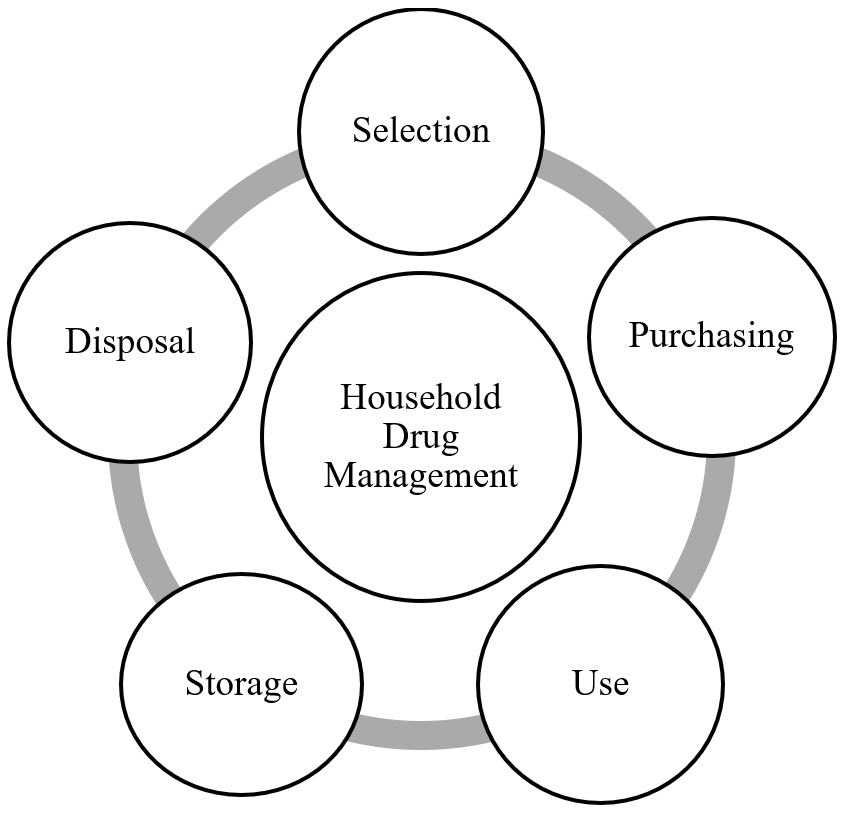
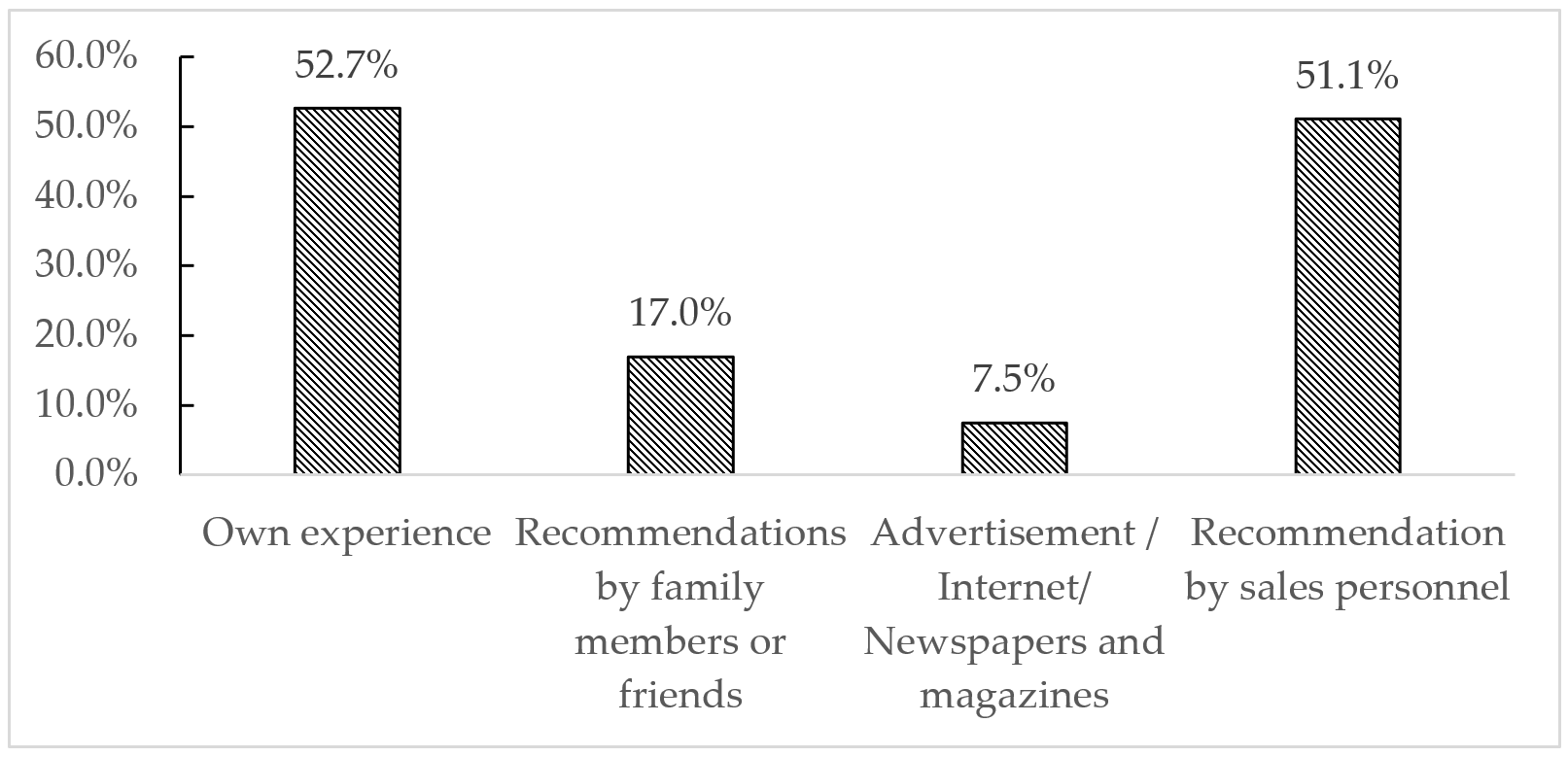
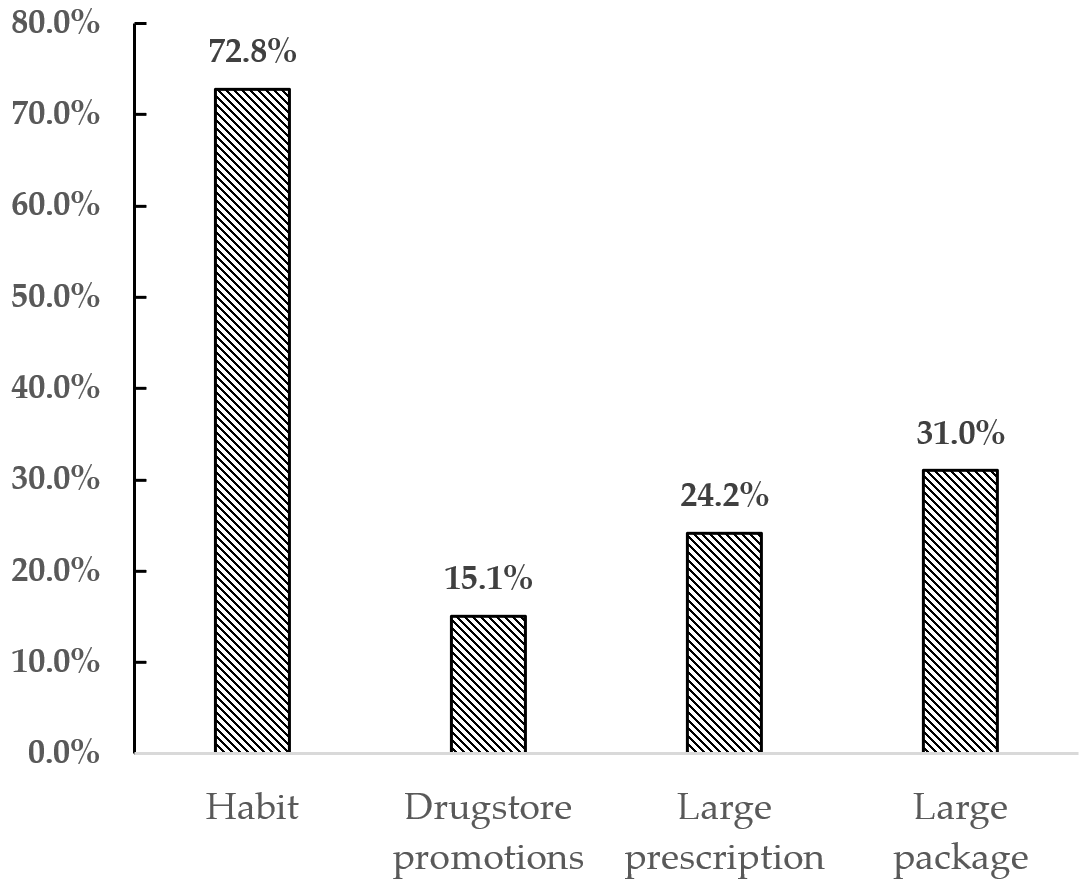
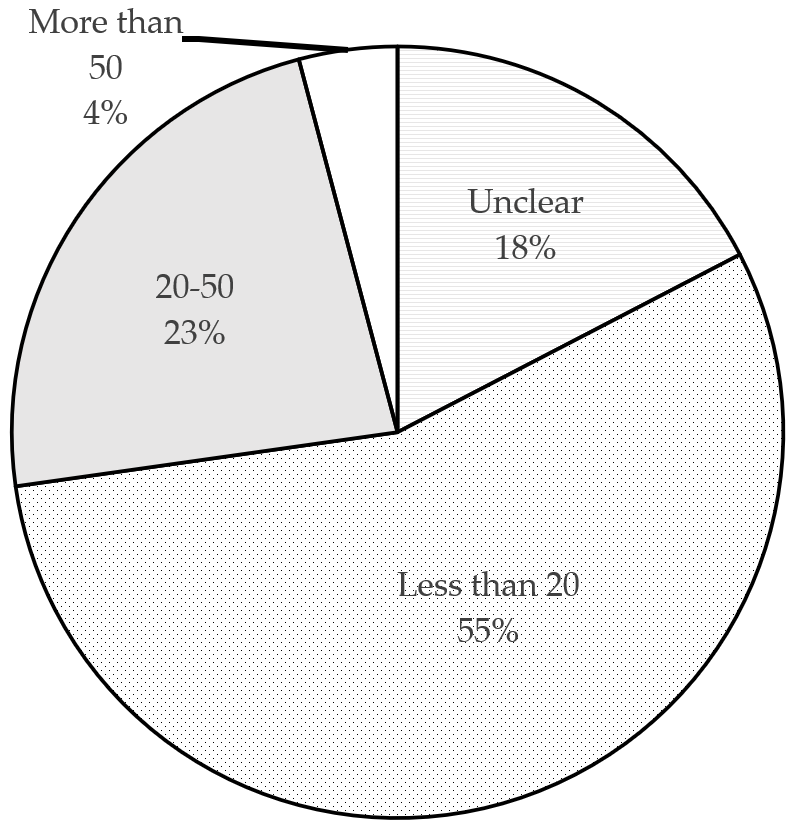
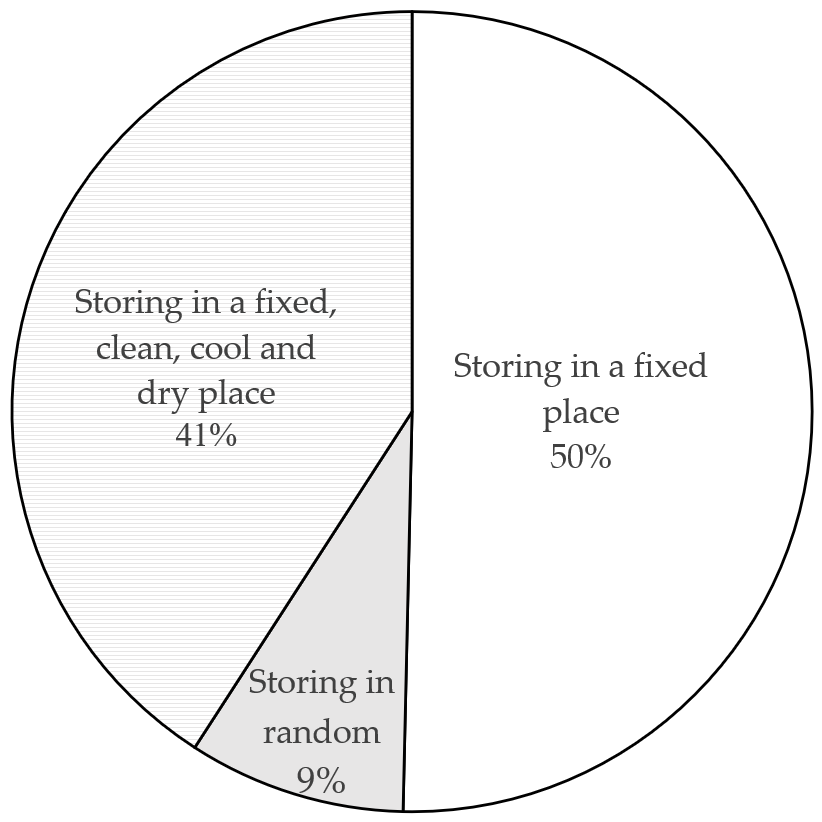
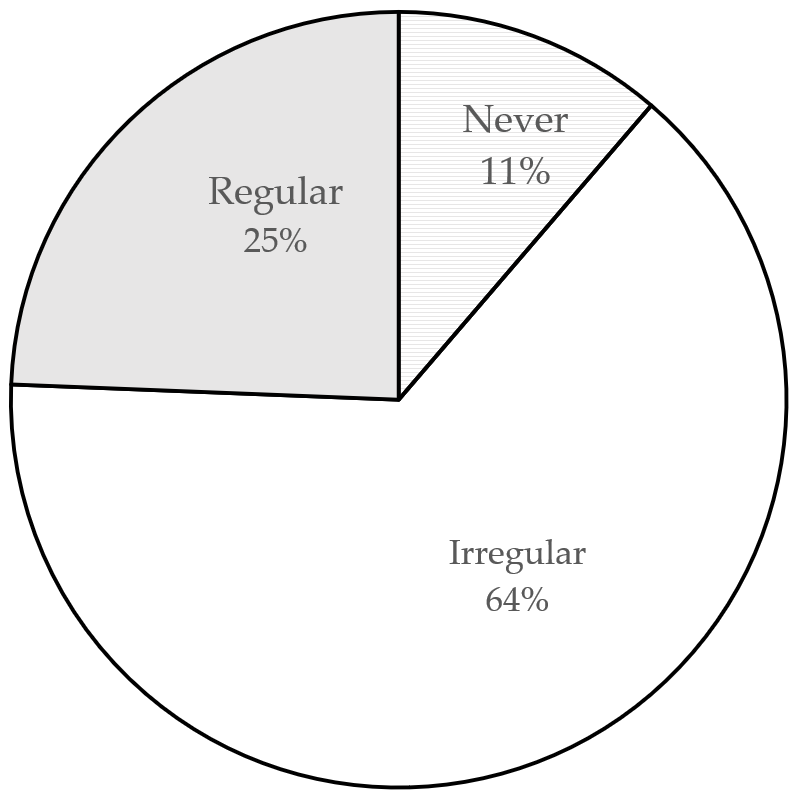
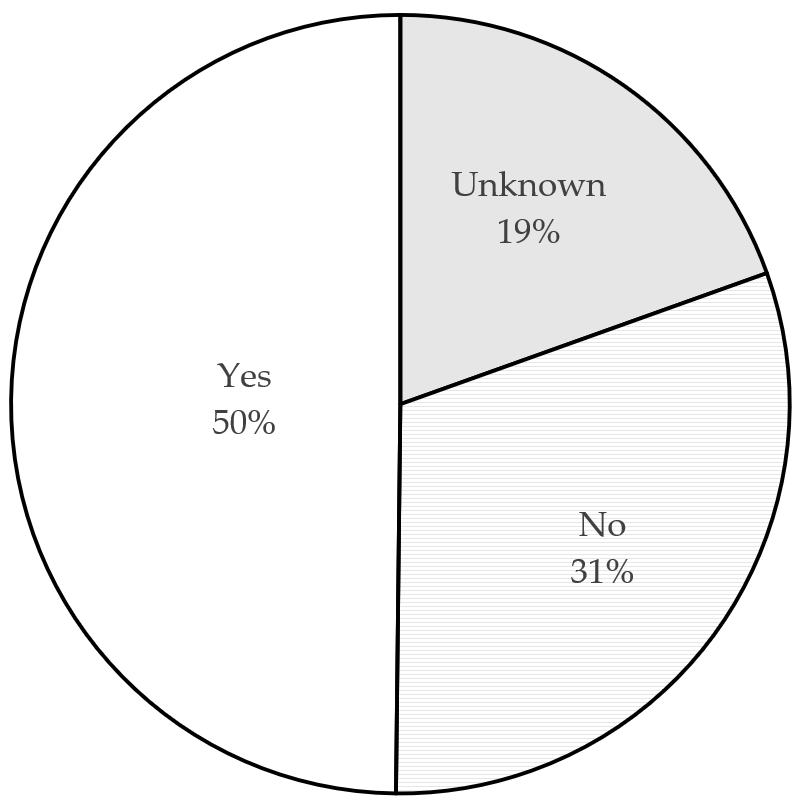
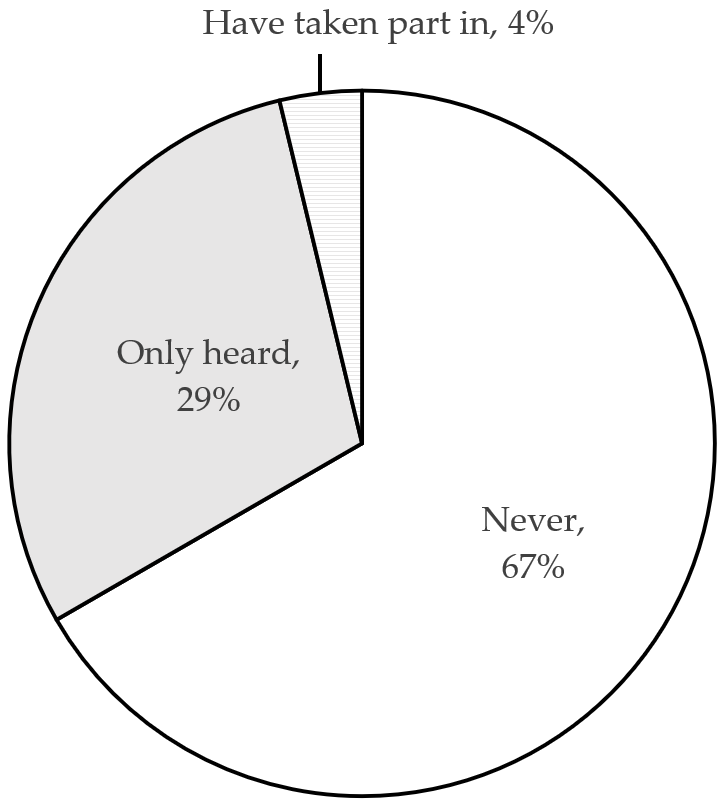
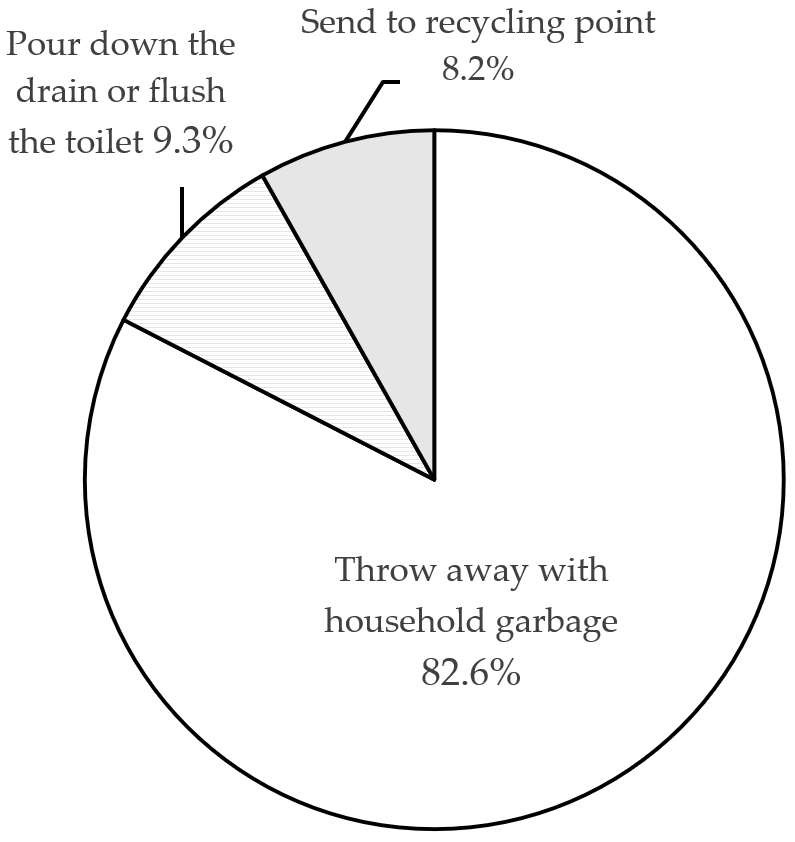
| Measure | Items | Number of Respondents | Percentage % |
|---|---|---|---|
| Age (Years) | <20 | 52 | 9 |
| 20–35 | 261 | 47 | |
| 36–50 | 172 | 31 | |
| >50 | 73 | 13 | |
| Education | High school or below | 168 | 30 |
| College or Bachelor | 294 | 53 | |
| Master or PhD | 96 | 17 | |
| Income/per month (Chinese Yuan) | <2500 | 144 | 26 |
| 2500–5000 | 207 | 37 | |
| 5000–10,000 | 147 | 26 | |
| >10,000 | 60 | 11 | |
| Gender | Male | 266 | 48 |
| Female | 292 | 52 | |
| Number of family members | 1–2 | 40 | 7 |
| 3 | 177 | 32 | |
| 4 | 172 | 31 | |
| 5 | 169 | 30 | |
| Administrative districts | Wuhua | 122 | 22 |
| Chenggong | 102 | 18 | |
| Panlong | 103 | 19 | |
| Guandu | 117 | 21 | |
| Xishan | 114 | 20 |
| Questions | Mean (SD) | t Value |
|---|---|---|
| P1. I often wonder which drugstore has the medicine I want to buy | 2.76 (1.04) | −5.39 * |
| P2. It is not always known which drugstore is cheaper, more affordable, or has promotional activities | 3.22 (1.06) | 4.93 * |
| P3. When faced with the same drugs produced by different manufacturers, I often do not know which one to buy | 3.36 (1.08) | 7.87 * |
| Questions | Mean (SD) | t Value |
|---|---|---|
| U1. When I decide to take drugs, I often have problems such as how to combine various drugs, their dosages, and the times I take the drugs | 2.68 (1.03) | −7.87 * |
| U2. In the later period of medication or after getting better, it is often uncertain whether the drugs need to be adjusted, such as reducing the dose, choosing other alternative drugs, and so on | 3.15 (0.97) | 3.58 * |
| U3. In the long term, I often forget to take drugs on time | 3.06 (1.04) | 1.39 |
| Practices | Questions | Problems/Opportunities |
|---|---|---|
| Selection | How | Most consumers depend on their experience and recommendations by sales personnel |
| Purchasing | Where | Consumers do not know which drugstores offer cheaper drugs or discount activities |
| What | It is difficult for consumers to choose between manufacturers | |
| Use | How to adjust | Consumers do not know how to adjust their medication |
| Storage | Why | Habit of storing large amounts of drugs and buying drugs in large package sizes |
| How to clear up | Most families clear up drugs cabinets irregularly and have large amounts of expired drugs in their homes. | |
| Disposal | How to recycle | Most consumers do not know about the activity while a significant share of consumers have actually engaged in recycling activities |
| How to dispose | Most consumers choose to throw drugs into the garbage |
Publisher’s Note: MDPI stays neutral with regard to jurisdictional claims in published maps and institutional affiliations. |
© 2021 by the authors. Licensee MDPI, Basel, Switzerland. This article is an open access article distributed under the terms and conditions of the Creative Commons Attribution (CC BY) license (https://creativecommons.org/licenses/by/4.0/).
Share and Cite
Luo, Y.; Reimers, K.; Yang, L.; Lin, J. Household Drug Management Practices of Residents in a Second-Tier City in China: Opportunities for Reducing Drug Waste and Environmental Pollution. Int. J. Environ. Res. Public Health 2021, 18, 8544. https://doi.org/10.3390/ijerph18168544
Luo Y, Reimers K, Yang L, Lin J. Household Drug Management Practices of Residents in a Second-Tier City in China: Opportunities for Reducing Drug Waste and Environmental Pollution. International Journal of Environmental Research and Public Health. 2021; 18(16):8544. https://doi.org/10.3390/ijerph18168544
Chicago/Turabian StyleLuo, Yumei, Kai Reimers, Lei Yang, and Jinping Lin. 2021. "Household Drug Management Practices of Residents in a Second-Tier City in China: Opportunities for Reducing Drug Waste and Environmental Pollution" International Journal of Environmental Research and Public Health 18, no. 16: 8544. https://doi.org/10.3390/ijerph18168544
APA StyleLuo, Y., Reimers, K., Yang, L., & Lin, J. (2021). Household Drug Management Practices of Residents in a Second-Tier City in China: Opportunities for Reducing Drug Waste and Environmental Pollution. International Journal of Environmental Research and Public Health, 18(16), 8544. https://doi.org/10.3390/ijerph18168544





